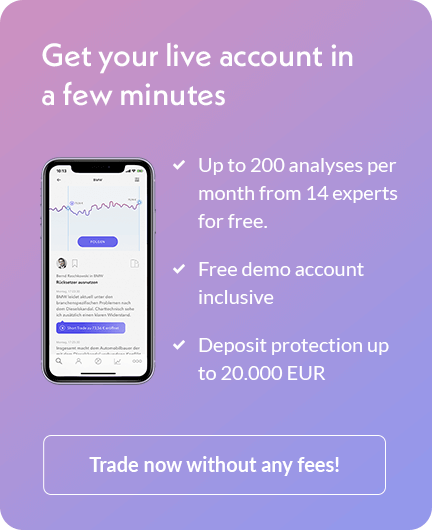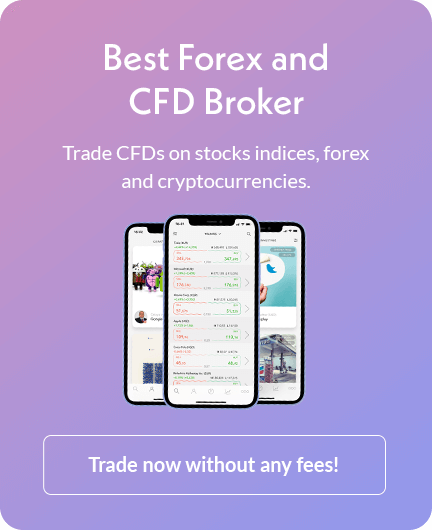How to trade forex for beginners?
The forex market is a global marketplace offering plenty of potential for new traders to trade currency pairs for profit. With an average daily trade volume of over $6 trillion, it is the largest and most liquid asset market in the world.
We all have to start somewhere – before conducting your first trades, you must learn how to start trading forex and learn how to trade forex successfully. There is no better place to start than with a comprehensive guide on how to trade forex for beginners.

Where to begin?
The first question any new trader will ask – how to start trading with forex? Trading can be very daunting at first but with careful practice, patient research, and a tough nerve, there is plenty of potential in the forex market. So, let’s start with how to trade currencies.
Choose your first currency pairs
The first step in forex trading will be to select a currency pair. This will be the exchange of the value of your base account currency for the value of another. Remember, in forex trading, you will always be trading currency in pairs such as to trade GBP/USD.
Perform market analysis
This doesn’t mean you should just jump in and trade. Now you must research and conduct analysis on your chosen currency pair. If you wish to trade EUR/USD, you will obviously want to know about everything that affects the value of either one of these currencies. Thankfully, there is a wealth of research tools available to forex traders. Forex traders should regularly check historical charts, view indicators, and perform technical analysis. Many traders rely on economic announcements listed on economic calendars too. This form of trading is known as trading the news and is a vital tool for speculative trading.
Identify and understand the quote
Whenever you select a currency pair, you will notice a few important components. Firstly, you will see the rate in which you can sell the currency pair at. The second rate is the price that you can buy the currency pair at. The difference between these two rates is what is known as the spread. But what is spreads in forex? The spread is the amount the dealer charges for making the trade for you.
Buy or sell – It’s your decision
Unlike some financial instruments, in forex trading you can speculate on whether the market will go up or down. This is because when you buy a position you are selling another at the same time.
Buying a position means you are speculating that the value of your base currency will rise compared to the quoted currency. Such as if you were to trade USD/JPY, you are backing the value of the US dollar which will be strengthened against the Japanese Yen. If you sell a position, you are speculating that the value of your base currency will drop when compared to the quoted currency. This means if you were to trade USD/JPY again, you are backing the USD to weaken against the Japanese Yen.
Your first trade
Making the first trade is exciting but also a bit daunting. If you have ever wondered how to trade forex for beginners, read on to learn how to make that first trade.
To fully explain the forex trading process, you’ll need to remember what is a pip in forex. A pip is a unit of measurement to indicate the change in value between a currency pair and is usually the last decimal place of a quoted price. For example, if the USD/AUD pair moves from 1.2001 to 1.2002, that is a value increase of .0001 or one pip.
Entering a position
Buying a position
Let’s say the current price for the AUD/USD pairing is 2.43820/840 and you are speculating that Australian dollar is heading for a push. So you choose to enter a buy position for one lot. You buy at a price of 2.43840. After a day of trading you take a look at that AUD/USD position you took – The pairing is now at a price of 2.44160. That is a price rise of 32 pips. You could close this position at the current sell price of 2.44160 and net a tidy profit.
Selling a position
But what if on that very same day you speculated the market would go a different way. Say you got it wrong and entered a sell position on the AUD/USD pair, quoted at a price of 2.43820/840. You entered the sell position for one forex lot at a price of 2.43820. Later that day, the price of AUD/USD rose to 2.44160 – This time that means your trade has lost 36 pips! If you were to decide to cut your losses, you would close the position at the buy price of 2.44180.
Understanding leverage
It is one of the features of trading forex over other financial instruments that is most attractive. Forex traders can typically access higher leverage. High leverage is used to build profit from a relatively small price change but dangerously, leverage can also significantly amplify losses. So what is leverage in forex and how can it impact your portfolio?
Some financial instruments, including forex, can use other people’s money to enter into a position. The act of borrowing capital for trading forex is known as leverage and typically one would borrow more capital than they are capable of fronting themselves. Most commonly a trader will borrow capital from a broker through what is known as margin trading.
Margin based leverage can be calculated as follows:
Total Value of Transaction / Margin Required = Margin-based Leverage
For example, if you are required to deposit 1% of the total transaction value as margin with the intention of trading one standard lot of USD/JPY which turned out to be $200,000, the margin required would be $2,000. Your margin-based leverage in this case would be 100:1.
However, if you wish to get a better indicator of profit/loss, it is best to calculate your real leverage. Real leverage for forex trading can be calculated as follows:
Total value of Transaction / Total Trading Capital = Real Leverage
Let’s put that into an example. If you had a $20,000 account, and you opened a position with $200,000, you would be forex trading with 10 times the leverage of your account balance. If you doubled your trade to two standard lots, your leverage would also double to 20 times your account balance.
Successful forex trading
There are few fundamental tips that can help you trade with great success.
Understand the markets
There may be nothing more important in your trading career than educating yourself about the market you wish to engage in. You may find yourself spending weeks researching news and watching currency pairs until you feel comfortable enough to enter a position. This investment in time could be the difference between losing money and making a profit.
Practice
As the old saying goes – Practice makes perfect! One of the best ways to test your forex trading strategies and learn about the mechanics of investing, such as reading forex price action, is to practice on a risk-free virtual platform. You can test your plans against real market conditions without risking any real money.
Understand what type of trader you are
As you can imagine with so many different traders, with different motivations and budgets, comes many different types of traders. Fast-paced traders with their fingers on the pulse may find day trading suits them best, while others may feel more comfortable with long positions. Whether trading the news, performing quick analysis, or deep research, make sure you know what kind of trader you are.
Additional tips
Know your limits and know when to stop
This crucial tip may be obvious but many traders fall into the trap. To trade forex, you need to be completely aware of your limitations. This means you must know how much you can afford to risk on a trade and never risk more than you can actually afford to lose. This is especially true of leveraged trades where your losses can be amplified significantly.
Very few traders can watch the markets all the time and it would be a difficult task to do so. The best way to manage your trades, and protect your profits, is through stop and limit orders. You really need to know when to stop, otherwise you run the risk of the market turning on you, or continuing to lose when you hope the market will pick back up. Setting prices to exit on will go a long way to protecting your profits and decreasing potential losses.
Keep your emotions in check
You made the wrong call and you’re losing money. Perhaps you think a couple of quick trades outside of your strategy could make up the difference? Wrong! This form of trading very rarely bears fruit – in fact, revenge trading often increases your losses.
You are more likely to make mistakes when you let emotion creep in. It is best to stick to the plan and make up the losses over time.
Conclusion
The forex market is the largest and most liquid asset market in the world and offers a world of opportunity for retail traders. Open 24hours a day, 5 days a week, the forex market is available to multiple types of traders.
Before how to trade forex, traders must learn to understand the markets, read currency pair quotes, and identify market movements. Forex trading is an exciting practice and with diligence you can learn how to trade forex successfully at nextmarkets.
How to trade forex FAQ
- What is price action?
- Forex vs Stocks - Which is more profitable?
- Trading the news in forex
- What is forex lot size?
- What is forex market?
- Currency trading for beginners
- What is cryptocurrency
- What are ETFs
- Stock market analysis - How to research stocks 2023
- How to short stocks
- How to buy stocks
- What are stocks, shares and equities?




